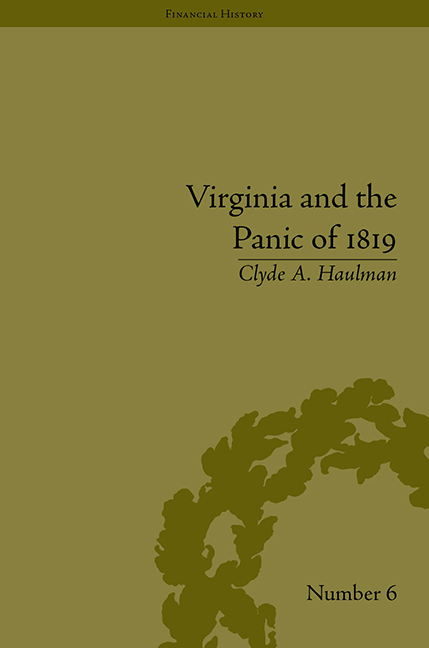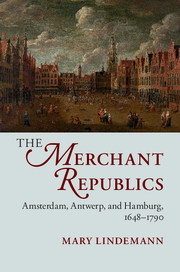Refine search
Actions for selected content:
26946 results in Economic history
Introduction: Latin American Economic Backwardness Revisited
-
-
- Book:
- The Economies of Latin America
- Published by:
- Pickering & Chatto
- Published online:
- 05 December 2014, pp 7-18
-
- Chapter
- Export citation
6 - Big Visions: Competition, Consolidation and the Great Tunnel-Connector War of the 1990s
-
- Book:
- Gambling on the American Dream
- Published by:
- Pickering & Chatto
- Published online:
- 05 December 2014, pp 149-174
-
- Chapter
- Export citation
List of Charts and Tables
-
- Book:
- Virginia and the Panic of 1819
- Published by:
- Pickering & Chatto
- Published online:
- 05 December 2014, pp ix-xii
-
- Chapter
- Export citation
Index
-
- Book:
- The Economies of Latin America
- Published by:
- Pickering & Chatto
- Published online:
- 05 December 2014, pp 233-240
-
- Chapter
- Export citation
3 - Challenges – Contradictions of Development?
-
- Book:
- Energy, Trade and Finance in Asia
- Published by:
- Pickering & Chatto
- Published online:
- 05 December 2014, pp 51-64
-
- Chapter
- Export citation

Virginia and the Panic of 1819
- The First Great Depression and the Commonwealth
-
- Published by:
- Pickering & Chatto
- Published online:
- 05 December 2014
-
- Book
- Export citation
8 - Conclusion: The Life They Made
-
- Book:
- Entrepreneurial Families
- Published by:
- Pickering & Chatto
- Published online:
- 05 December 2014, pp 127-132
-
- Chapter
- Export citation
3 - A Winning Bet? Success and Struggle in the 1980s
-
- Book:
- Gambling on the American Dream
- Published by:
- Pickering & Chatto
- Published online:
- 05 December 2014, pp 59-94
-
- Chapter
- Export citation
7 - The Energy Giants
-
-
- Book:
- Energy, Trade and Finance in Asia
- Published by:
- Pickering & Chatto
- Published online:
- 05 December 2014, pp 113-152
-
- Chapter
- Export citation
6 - Silver in England 1600–1800: Coinage Outputs and Bullion Exports from the Records of the London Tower Mint and the London Company of Goldsmiths
-
-
- Book:
- Money in the Pre-Industrial World
- Published by:
- Pickering & Chatto
- Published online:
- 05 December 2014, pp 97-110
-
- Chapter
- Export citation
Epilogue
-
- Book:
- Entrepreneurial Families
- Published by:
- Pickering & Chatto
- Published online:
- 05 December 2014, pp 133-140
-
- Chapter
- Export citation
2 - An Overview of the Panic of 1819
-
- Book:
- Virginia and the Panic of 1819
- Published by:
- Pickering & Chatto
- Published online:
- 05 December 2014, pp 25-38
-
- Chapter
- Export citation
4 - Agriculture, Exports and Land
-
- Book:
- Virginia and the Panic of 1819
- Published by:
- Pickering & Chatto
- Published online:
- 05 December 2014, pp 57-72
-
- Chapter
- Export citation
Epilogue
-
- Book:
- Gambling on the American Dream
- Published by:
- Pickering & Chatto
- Published online:
- 05 December 2014, pp 239-250
-
- Chapter
- Export citation
List of Tables
-
- Book:
- Female Economic Strategies in the Modern World
- Published by:
- Pickering & Chatto
- Published online:
- 05 December 2014, pp xi-xiv
-
- Chapter
- Export citation
7 - From Economic to Political Reality: Forming a Nationalized Indian Life Insurance Market
- from Part II - Life, Health and Social Insurance
-
-
- Book:
- The Development of International Insurance
- Published by:
- Pickering & Chatto
- Published online:
- 05 December 2014, pp 133-144
-
- Chapter
- Export citation

The Merchant Republics
- Amsterdam, Antwerp, and Hamburg, 1648–1790
-
- Published online:
- 05 December 2014
- Print publication:
- 11 December 2014
4 - Multilateral Insurance Liberalization, 1948–2008
- from Part I - Non-Life Insurance
-
-
- Book:
- The Development of International Insurance
- Published by:
- Pickering & Chatto
- Published online:
- 05 December 2014, pp 85-102
-
- Chapter
- Export citation
6 - ‘Assuring the Free World's Liquidity’ through Multiple Reserve Currencies
-
- Book:
- Reforming the World Monetary System
- Published by:
- Pickering & Chatto
- Published online:
- 05 December 2014, pp 83-96
-
- Chapter
- Export citation
Part III - Understanding Brazilian Institutions and Minerals
-
- Book:
- Mining and the State in Brazilian Development
- Published by:
- Pickering & Chatto
- Published online:
- 05 December 2014, pp -
-
- Chapter
- Export citation
